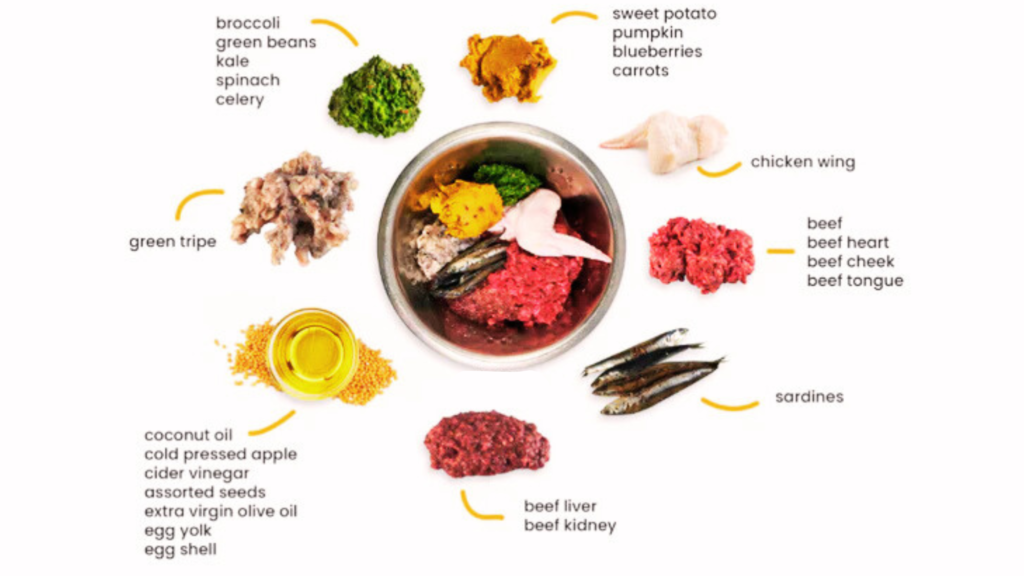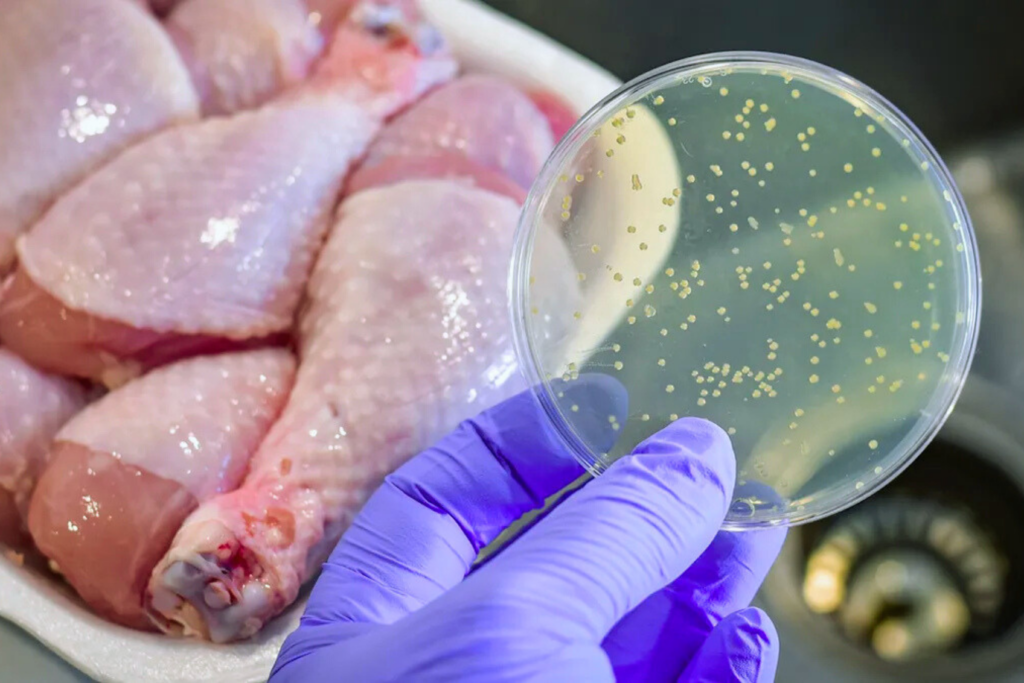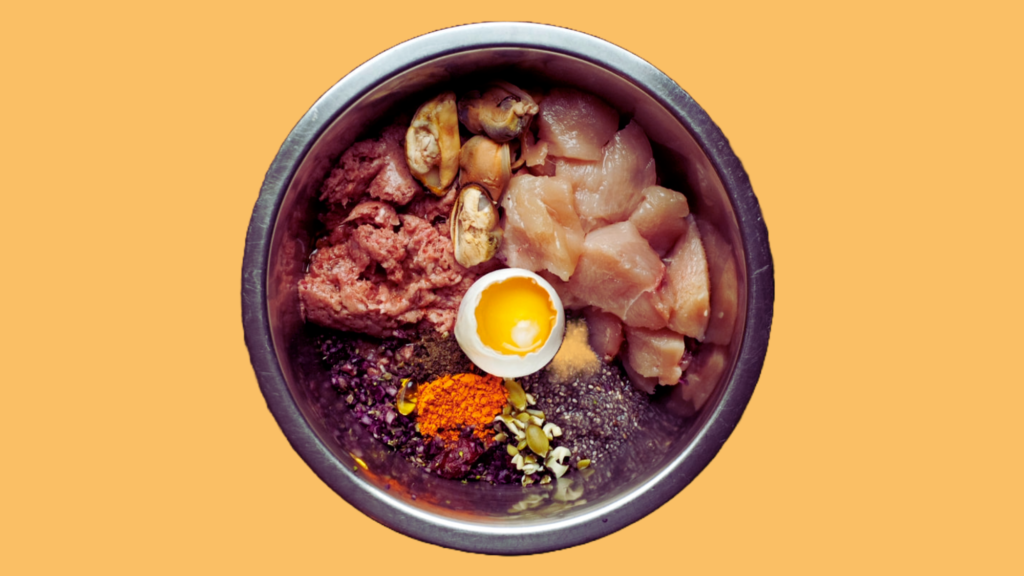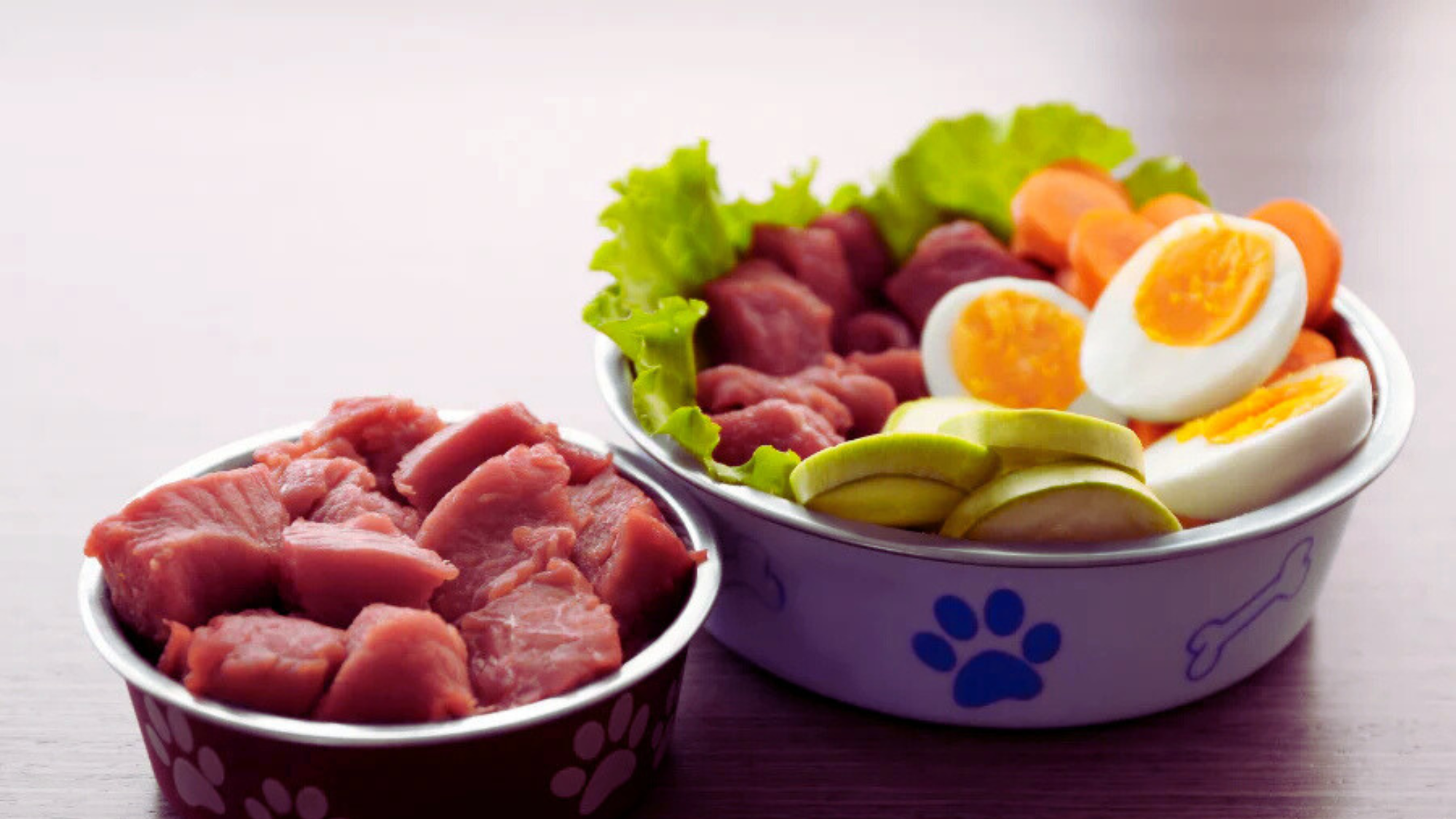| Summary: Scientific research on raw dog food diets highlights both benefits and risks. Benefits include improved digestion, healthier skin, and higher protein absorption. Risks involve bacterial contamination, nutritional imbalances, and choking hazards. While some veterinarians endorse raw feeding, others caution against it. Proper meal planning and veterinary guidance are essential for success. |
Dogs have been domesticated for thousands of years, yet their diets have continued to evolve. Over time, humans have fed their canine companions a variety of foods, ranging from table scraps to specially formulated commercial diets. However, in recent years, a shift toward more natural feeding methods has gained traction. One such diet that has sparked considerable interest is the raw food diet for dogs.
To decide whether a collar or harness is best for your Dachshund, check out this helpful guide: What is Best for Dachshund Collar or Harness.
Advocates claim that feeding raw aligns with a dog’s natural dietary needs, mimicking what their wild ancestors, such as wolves, would consume. They argue that raw food provides numerous health benefits, from improved digestion to shinier coats. However, skeptics, including many veterinarians, raise concerns about the potential risks of bacterial contamination and nutritional imbalances. Dog raw food diet scientific research plays a crucial role in objectively examining the pros and cons of this feeding approach.
I will explore the scientific research on a raw food diet for dogs, covering its potential benefits, risks, nutritional aspects, and expert opinions. By delving into various studies and expert insights, we aim to provide a well-rounded perspective on this controversial yet intriguing dietary choice.
Blog Highlights
ToggleQuick Fix Table
| Issue | Quick Fix Solution |
| Bacterial Contamination (Salmonella, E. coli) | Freeze meat before feeding, clean utensils, wash hands thoroughly. |
| Nutritional Imbalances | Follow vet-approved recipes or choose commercially balanced raw diets. |
| Choking & Bone Hazards | Use appropriate bone sizes or opt for ground bones/bone meal. |
| Digestive Upset | Transition gradually, introduce small portions first. |
| Vitamin/Mineral Deficiencies | Include organ meats, eggs, and supplements as needed. |
What is a Raw Food Diet for Dogs?
A raw food diet for dogs, often referred to as the BARF (Biologically Appropriate Raw Food) diet, consists of raw meat, bones, organs, and sometimes vegetables and fruits. This approach is based on the principle that dogs thrive on minimally processed, high-protein diets similar to what their ancestors would have consumed in the wild. The best collar size for an American Staffordshire Terrier ensures a comfortable and secure fit for your dog during walks and training.

The key components of a raw food diet include:
- Raw meat (beef, chicken, lamb, fish, turkey, etc.)
- Raw edible bones (for calcium and dental health)
- Organ meats (liver, kidneys, heart, etc.)
- Vegetables and fruits (carrots, spinach, apples, blueberries, etc.)
- Dairy and supplements (yogurt, eggs, omega-3 oils, etc.)
The philosophy behind raw feeding is rooted in providing food in its most natural, unprocessed form. Supporters argue that this diet more closely resembles what dogs are biologically designed to eat. However, critics caution that without careful planning, raw diets may lead to deficiencies or imbalances in essential nutrients, potentially affecting a dog’s long-term health.
Dog Raw Food Diet Scientific Research
1. Evolutionary Perspective: Are Dogs Built for Raw Food?
The theory behind raw feeding is based on evolutionary biology. Wolves, the ancestors of modern dogs, thrive on raw meat, leading some to believe that domesticated dogs should follow a similar dietary pattern. Wolves hunt and consume whole prey, including bones, organs, and muscle meat, which provide a range of essential nutrients without artificial additives.
However, research suggests that domesticated dogs have evolved to digest starches better than wolves. A 2013 study published in Nature found that domesticated dogs have more genes for amylase production—the enzyme responsible for digesting carbohydrates. This genetic adaptation indicates that dogs have developed the ability to process plant-based foods over time, likely due to their close relationship with humans and exposure to agricultural diets.
While dogs still retain a carnivorous digestive system, meaning they primarily digest protein and fat efficiently, their ability to metabolize carbohydrates should not be ignored. This suggests that a balanced diet may not necessarily need to exclude cooked or processed foods, as some raw diet proponents claim. Instead, dietary decisions should be based on individual health needs rather than purely evolutionary arguments.
To find out the what size collar for an Affenpinscher, ensure you measure your dog’s neck correctly for a perfect fit.
2. Nutritional Benefits of a Raw Food Diet
Several studies have analyzed the nutritional benefits of raw diets compared to commercial dog food. Dog raw food diet scientific research suggests that dogs on raw diets tend to consume higher-quality protein and fats, leading to improved muscle tone, healthier skin, and enhanced energy levels. The lack of artificial preservatives and fillers also contributes to better overall nutrition.
Higher Protein and Nutrient Absorption
Raw diets tend to be high in protein, which supports muscle development, healthy skin, and coat. A 2017 study in the Journal of Animal Physiology and Animal Nutrition found that dogs on raw diets had higher protein digestibility compared to those on kibble. This means that raw-fed dogs can absorb and utilize more nutrients from their food, leading to better overall health.
The absence of excessive carbohydrates and processed grains also helps reduce inflammation and supports lean muscle maintenance. Dogs that require high-energy diets, such as working breeds, may particularly benefit from the protein-rich nature of raw food. However, careful portion control is essential to prevent overfeeding and obesity.
Improved Gut Health
A 2019 study in Frontiers in Veterinary Science showed that raw-fed dogs had a more diverse and healthier gut microbiome than kibble-fed dogs. A diverse gut microbiome is linked to better immunity and digestion. Beneficial bacteria in the gut play a crucial role in breaking down food, absorbing nutrients, and defending against harmful pathogens.

Because raw diets are less processed, they contain natural enzymes that can aid digestion and promote a balanced gut environment. This can be particularly beneficial for dogs with digestive sensitivities or allergies to common commercial dog food ingredients.
However, it is important to note that abrupt dietary changes can cause temporary digestive upset, so transitioning gradually is recommended. Check out the best dog collars for Border Collie to find durable, stylish, and comfortable options for your active dog.
Better Skin and Coat Health
Many dog owners report shinier coats and fewer skin allergies on raw diets. A study published in Veterinary Dermatology found that a high-protein diet rich in omega-3 fatty acids (from raw fish and meat) improved skin conditions in dogs with allergies. Skin issues such as dryness, itching, and excessive shedding are often linked to poor nutrition or food intolerances.
Raw diets naturally provide essential fatty acids that support skin hydration and coat luster. Omega-3s also have anti-inflammatory properties, which can help alleviate chronic skin conditions. While some commercial dog foods contain added omega-3 supplements, obtaining these nutrients from natural food sources may enhance their bioavailability.
Potential Risks of a Raw Food Diet
Despite its benefits, the raw food diet is controversial among veterinarians and pet nutritionists. Critics argue that the risks associated with raw feeding should not be overlooked, particularly when it comes to bacterial contamination and nutritional balance. Here are the main concerns:
1. Bacterial Contamination (Salmonella & E. coli)
Raw meat can contain harmful bacteria like Salmonella and E. coli, which pose health risks to both dogs and their owners. These bacteria can lead to foodborne illnesses, causing symptoms such as vomiting, diarrhea, and fever in dogs. Additionally, dogs that shed harmful bacteria in their feces can inadvertently expose humans to infections.

A study from the Centers for Disease Control and Prevention (CDC) found that raw-fed dogs shed more Salmonella in their feces, increasing the risk of human infection. Another study in Veterinary Record (2018) showed that commercial raw dog foods were more likely to contain harmful bacteria compared to kibble. This highlights the importance of sourcing high-quality, fresh ingredients and handling raw food with proper hygiene practices.
Solution: Proper handling, freezing raw meat before feeding, and cleaning utensils can reduce bacterial risks. Washing hands thoroughly after handling raw food and disinfecting food preparation areas are also essential steps in minimizing contamination risks.
2. Nutritional Imbalances and Deficiencies
One of the biggest concerns with raw feeding is the risk of nutritional imbalances. Unlike commercial dog foods that are formulated to meet AAFCO (Association of American Feed Control Officials) standards, homemade raw diets may lack essential nutrients if not properly balanced. Deficiencies in calcium, phosphorus, vitamins, and trace minerals can lead to serious health issues over time.
For example, an improper calcium-to-phosphorus ratio can result in bone deformities, weak teeth, and skeletal problems, particularly in growing puppies. A study in The Journal of Veterinary Internal Medicine found that some raw-fed puppies developed osteodystrophy (a bone growth disorder) due to calcium deficiency. Adult dogs, too, can suffer from weak bones and joint problems if their diet lacks the necessary nutrients. This is why many veterinarians recommend either carefully balancing raw meals or using pre-made raw diets that are formulated by professionals.
Another concern is vitamin and mineral deficiencies, particularly in diets that exclude organ meats. Organs such as liver and kidneys are rich in essential vitamins like A, D, and B-complex, which support immune function and metabolism.
Without these nutrients, dogs can experience fatigue, weakened immune systems, and poor coat health. Some pet owners attempt to supplement their dog’s raw diet with synthetic vitamins, but improper dosing can lead to toxicity, especially with fat-soluble vitamins like A and D.
To mitigate these risks, pet owners must either follow carefully researched recipes designed by veterinary nutritionists or choose commercial raw diets that meet regulatory standards. Simply feeding muscle meat and bones is not enough; a well-structured meal plan is necessary to ensure balanced nutrition.
3. Choking Hazards and Bone-Related Injuries
Another risk associated with raw feeding is the potential danger of bones. While raw bones are often praised for promoting dental health by preventing plaque buildup, they can also pose serious hazards. If a bone is too large, too hard, or splinters easily, it can cause choking, intestinal blockages, or even perforate the digestive tract.
A report in the Journal of the American Veterinary Medical Association (JAVMA) documented several cases where dogs suffered from gastrointestinal obstructions due to bone fragments. In severe cases, emergency surgery was required to remove the obstruction. Cooked bones, in particular, are more likely to splinter, but even raw bones can present risks if they are too sharp or brittle.
To reduce these dangers, raw feeders must carefully select appropriate bone sizes for their dog’s breed and chewing habits. Large weight-bearing bones from large animals (such as beef femurs) may be too hard and can cause tooth fractures. Conversely, smaller bones, such as chicken necks and wings, can be swallowed whole and lead to throat obstructions. Supervision during mealtime and choosing softer, digestible bones like raw chicken wings or turkey necks can help minimize risks.
Some pet owners opt for bone meal or calcium supplements instead of whole bones to eliminate choking hazards while still providing essential nutrients. This approach ensures the dog gets the necessary minerals for strong bones and teeth without the risk of injury. For guidance on choosing the right collar size for an Airedale puppy, check out this detailed guide.
Expert Opinions on Raw Diets
Veterinary opinions on raw diets are divided, with some professionals endorsing it under controlled conditions and others strongly opposing it due to safety concerns. The American Veterinary Medical Association (AVMA) has issued statements cautioning against raw diets due to public health risks, particularly bacterial contamination.
Dr. Lisa Freeman, a veterinary nutritionist at Tufts University, argues that raw diets are unnecessary for most dogs and may introduce more harm than good. She emphasizes that properly formulated commercial dog food already provides all the essential nutrients dogs need, eliminating the risk of deficiencies. She also warns that raw-fed dogs can spread bacteria to immunocompromised individuals, such as young children and elderly family members.
On the other hand, some holistic veterinarians believe that raw feeding can offer benefits when done correctly. Dr. Ian Billinghurst, one of the pioneers of the BARF diet, claims that raw food leads to improved vitality, fewer allergies, and better digestion. He argues that the risks of bacterial contamination are overstated, as dogs have strong stomach acids that can neutralize many harmful pathogens.
Ultimately, pet owners should consult with their veterinarian to determine if a raw diet is suitable for their dog’s specific health needs and lifestyle. While some dogs thrive on raw food, others may develop nutritional deficiencies, digestive issues, or bacterial infections. A well-balanced approach, including veterinary guidance and careful meal planning, is crucial for success. For insights on whether Airedales are good off-leash, explore this comprehensive article.
Should You Switch Your Dog to a Raw Diet?
Deciding whether to switch your dog to a raw diet should be based on careful consideration of both benefits and risks. Raw feeding requires significant effort, including meal preparation, sourcing high-quality ingredients, and maintaining strict hygiene practices. It is not as simple as feeding raw meat; a properly balanced raw diet requires careful nutrient calculations and supplementation when necessary.
For some dogs, particularly those with food allergies or digestive issues, a raw diet may provide relief from chronic conditions. If commercial kibble has caused recurring issues such as skin allergies, digestive upset, or obesity, transitioning to a raw diet under veterinary supervision may be worth exploring.

However, if your dog is already thriving on a high-quality, balanced commercial diet, there may not be a compelling reason to switch. The risk of bacterial contamination, nutritional imbalances, and bone injuries should be carefully weighed against the potential benefits.
For pet owners who want the advantages of raw feeding without the risks, freeze-dried or lightly cooked raw diets may offer a safer alternative. Discover the benefits of using a harness by reading this guide on should a Collie wear a harness.
Final Tip: If you decide to transition your dog to raw food, do it gradually. Sudden dietary changes can cause digestive upset, leading to diarrhea or vomiting. Start by introducing small portions of raw food alongside their regular diet, then gradually increase the raw portion over several weeks. Always monitor your dog’s health closely and consult a veterinarian for guidance.
Conclusion: The Verdict on Raw Diets
The raw food diet for dogs is a highly debated topic in the pet community, with passionate advocates and strong critics. Dog raw food diet scientific research has highlighted both the potential benefits and risks, making it essential for dog owners to evaluate their pet’s individual needs before making dietary changes.
While raw diets can provide higher-quality protein, better gut health, and shinier coats, they also come with challenges, including bacterial contamination, nutritional imbalances, and bone hazards. The decision to feed raw should be based on scientific evidence, veterinary advice, and careful planning rather than trends or anecdotal claims.

If done correctly, raw feeding can be a nutritionally sound option for some dogs. However, it requires dedication, proper knowledge, and responsible food handling. Pet owners who wish to try raw diets should do so with well-researched recipes, expert guidance, and regular health monitoring.
Ultimately, the best diet for a dog is one that meets their specific health requirements, supports longevity, and ensures overall well-being—whether it’s raw, cooked, or commercial kibble. Learn if Dachshunds need special collars to provide the right support and comfort for their unique body shape.





